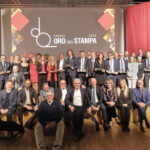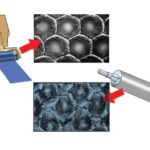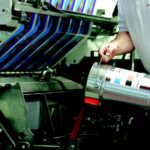The sector commitment to packaging safety . The contribution by Giflex and IrcPack, that have devised a method for rating the risk of toxicological damage due to the set-off of printed flexible materials.
The Italian association of flexible packaging manufacturers – Giflex has always kept a close eye on the technical and legal issues that concern the food packaging supply chain. The necessity to fully comply with the requirements of law and, in first place, to voluntarily guarantee the absolute safety of products made, has led the group to invest human and economic resources in practical testing and research, with the objective of supplying associate concerns effective tools for guaranteeing the high safety standards required. In light of this, the fruitful collaboration between Giflex and IRCPACK has resulted in the development of a control method capable of responding to the provisions stipulated in the European Regulation (EC) 2023/2006, better known as GMPs. The method enables verifying the adequacy of a production process and the compliance of raw materials used and supplies a control method in cases of contention. Thanks to the professionalism and competencies of the authors of this study, during the course of the research, it emerged that the quality and mole of data collected enabled giving the entire study a broader scope, extending the analysis to the risk evaluation models in compliance with the most recent orientations of the laws on materials in contact with food products.
The research in brief
The report, drawn up by Valter Rocchelli (IrcPack) and Mara Baronciani (Sepack-Lab), dutifully starts from the normative framework (basic reference the GMPs of EC Ruling 2023/2006) and provides definitions and introductions plus clarifications on methods, analyses and results.
The set-off evaluation protocol has been applied “in the field”. Executed in three phases, the study considered 75 samples of rotogravure or flexographically printed flexible materials by approximately 20 converters; the various structures and combinations of materials were taken into consideration: monofilm, double and triple laminates, printed inside, printed outside. The processed findings highlighted, among the others, the considerations expressed below.
Volatile organic compounds. Other than expected residual solvents, aliphatic hydrocarbons were also found, deriving from oligomeric fractions more volatile than polyolefin films; in no case were critical situations having to do with volatile compounds found.
Non-volatile organic compounds. The analyses mostly showed the presence of plasticizers used in the inks; most of these plasticizers are found in positive lists of plastic materials. A few “unidentified” peaks were also detected; most of these were subsequently attributed to well-defined compounds deriving from raw materials other than the inks, thanks to a collaboration with the entire production chain.
In conclusion
The research conducted has confirmed that the methods used respond to needs of simplicity, reliability and repeatability. Such methods have also proven suitable, albeit with appropriate changes required by the presence of materials other than plastic, as well as for the set-off evaluation of materials like paper and cardboard, coatings like lacquered aluminium and rigid plastic.
Ultimately, the same methods can be.
On ItaliaImballaggio website, English version, it is possible to download the PDF with the results of the study “Set off in printed flexible materials” http://dativoweb.net/it/contenuti/giflex-IrcPack-imballaggio-flessibile-set-off-verifica










